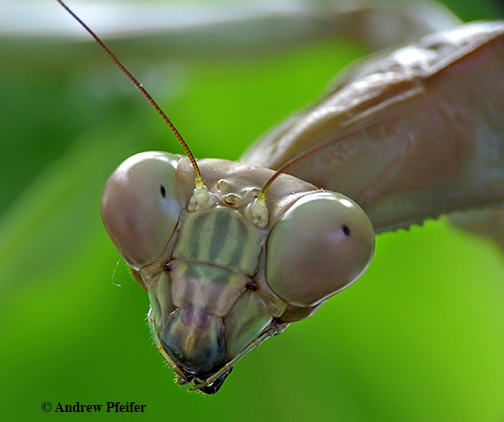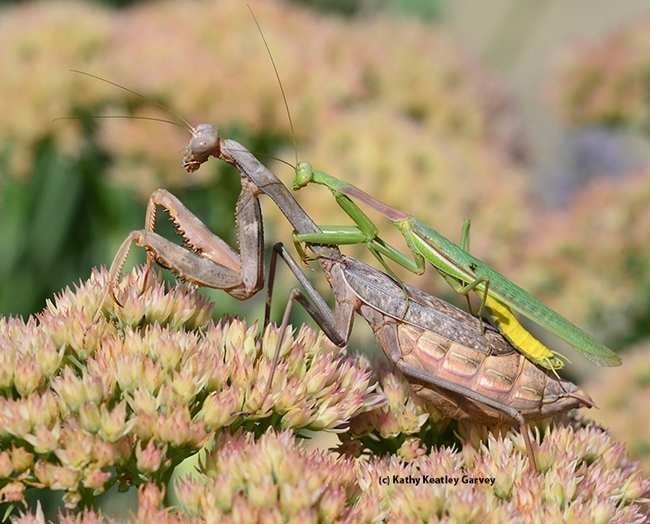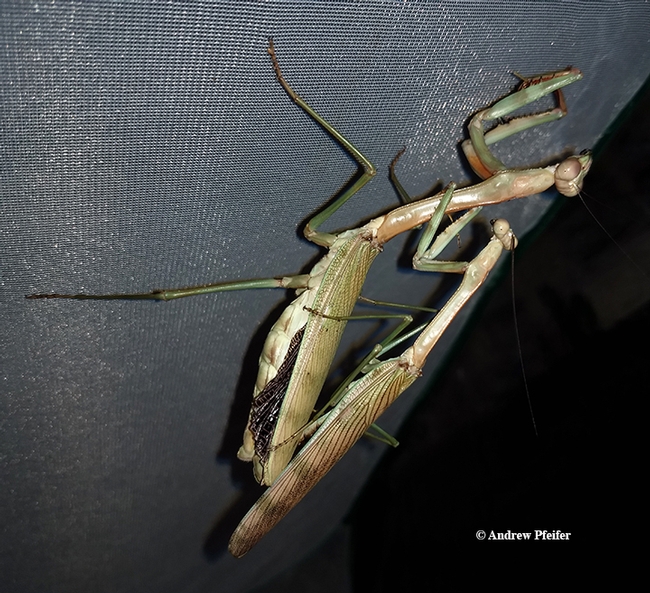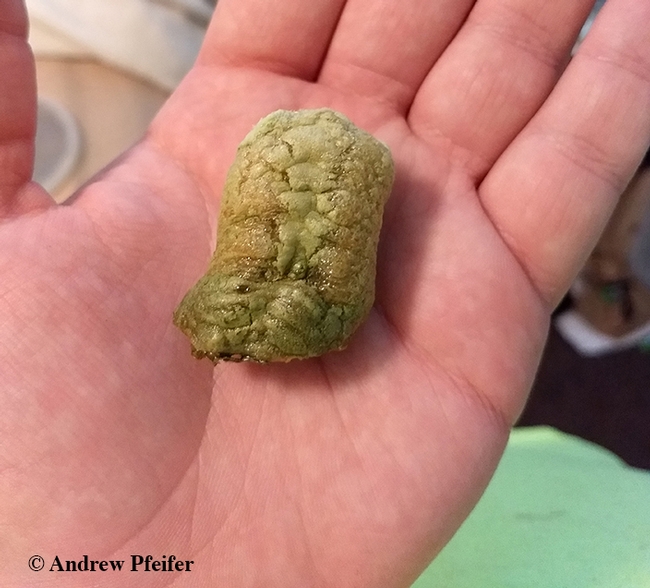
Hopefully, the male didn't lose his head.
Which begs a question asked by a reader: How long after mating does the female lay or produce her egg case (ootheca)?
"Usually it takes a week or two for temperate species, but tropical species can take much longer," says mantis expert Andrew Pfeifer of Monroe County, N.C., administrator for the public Facebook page, Mantis Keepers. "My Plistospilota guineensis took almost a month to lay hers. Mantis mating is a relatively straightforward process. A mature female will release pheromones to attract a male from a distance, hence why his antennae are longer and thicker. Upon getting close, he uses sight to find her. The male will slowly approach from behind, leaping on her back and using his antennae to calm her down by tapping her pronotum. Usually he will immediately curl his abdomen under her body until he meets her ovipositor, where he inserts his claspers. They will copulate for hours, with my longest pairing lasting two days. Eventually he will jump away, usually flying off to a safe distance from the female."
"The laying process itself can take anywhere from an hour to almost five depending on the size of the ooth," Pfeifer says. The Plistospilota guineensis ootheca is about as large as they can be, roughly equal to a large chicken egg."
Pfeifer, recently featured on Bug Squad, kindly shared his images of the adult mega mantids and a ootheca (see below) which is indeed enormous.
And how many mantids does he think might emerge from this mega mantis? "This one can contain upwards of 400," he says.
And THAT is a lot of mantids.
(Editor's Note: Praying mantids are among the insects featured in the live "petting zoo" at the Bohart Museum of Entomology, located in Room 1124 of the Academic Surge Building, University of California, Davis, campus. The Bohart, part of the UC Davis Department of Entomology and Nematology, will host an open house from 1 to 4 p.m. Saturday, Nov. 18. The theme is "Parasitoid Palooza" (featuring jewel wasps, nematodes and flies) but mantids can also be seen and photographed in the petting zoo. The event is free and open to the public and family friendly. Bohart Museum associate and UC Davis student Lohitashwa "Lohit" Garikipati breeds mantids and donated part of his collection, including an orchid mantis, to the Bohart. He is secretary of the UC Davis Entomology Club, advised by forensic entomologist Robert Kimsey, and is a member of the Facebook page, Mantis Keepers).
Attached Images:

Mating pair of Stagmomantis limbata, a common mantis in Vacaville, Calif. The male did not lose his head. (Photo by Kathy Keatley Garvey)

Mating pair of mega mantids, Plistospilota guineensis. These mantids are part of Andrew Pfeifer's collection in Monroe County, N.C. See the result below! (Photo by Andrew Pfeifer)

Praying mantis authority Andrew Pfeifer, who administers the public Facebook page, Mantis Keepers, captured this image of his Plistospilota guineensis ootheca. It's about the size of a large chicken egg. (Photo by Andrew Pfeifer)